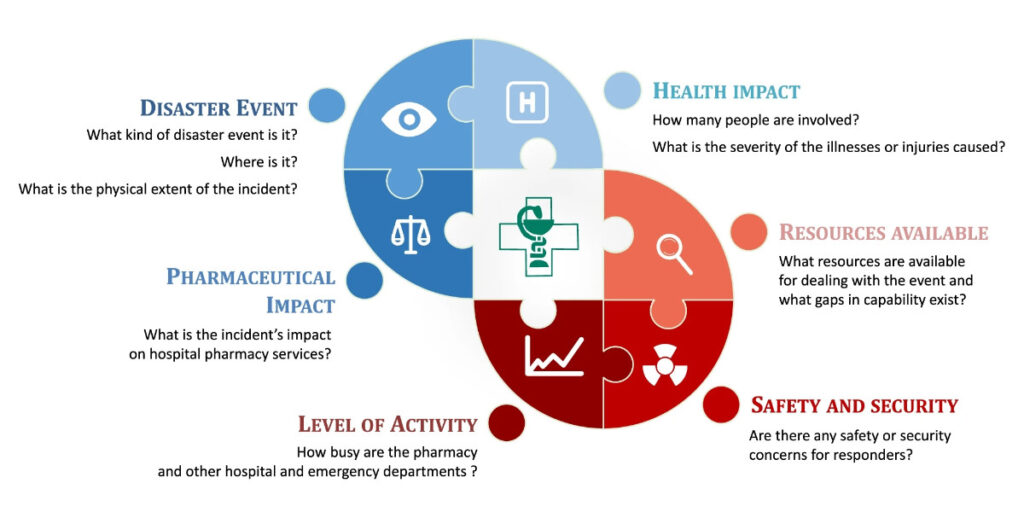Hospital Safety: Designing for Disaster Preparedness
Hospital safety is more crucial than ever, especially in regions prone to natural disasters such as earthquakes, floods, and storms.
“Healthcare facilities must be resilient to ensure the building’s integrity and guarantee the continuity of care in times of crisis,”
Kshitii Nagarkar, Shree Designs.
The importance of disaster preparedness is not merely theoretical; globally, incidents in hospitals during disasters have highlighted critical weaknesses in design and emergency planning.
Why Disaster Preparedness Matters
Hospitals are crucial in disaster response, serving as lifelines for entire communities. When natural disasters strike, these facilities must continue functioning effectively, providing life-saving care and coordinating emergency operations. However, incidents worldwide reveal that many hospitals remain vulnerable when disaster hits.
Global Perspective on Safety Incidents:
According to the World Health Organization (WHO), more than 1,300 health facilities were damaged or destroyed by disasters globally between 2000 and 2019, leaving communities without essential healthcare services.
The 2010 earthquake in Haiti saw the destruction of 50 hospitals and healthcare centres, highlighting the catastrophic impact of natural disasters on healthcare infrastructure.
Indian Context:
In India, healthcare facilities are highly vulnerable to natural disasters. The 2013 Uttarakhand floods severely damaged hospitals, cutting off access to healthcare services for weeks in some regions.
The National Institute of Disaster Management (NIDM) reports that over 50% of India’s healthcare infrastructure is located in disaster-prone areas, particularly in seismic zones and flood-prone regions like Jammu & Kashmir, Assam, and coastal cities such as Mumbai and Chennai.
Designing Hospitals for Disaster Preparedness
To safeguard hospital infrastructure and ensure uninterrupted care during disasters, healthcare architects are adopting innovative design strategies aimed at resilience. Here are several ways hospital design is evolving to address disaster risks:
1.Earthquake Resistant Structures
Hospitals in earthquake-prone regions are being built with reinforced foundations and seismic-resistant frameworks. Architects use flexible materials like steel-reinforced concrete to ensure that the building can absorb and dissipate seismic energy, reducing the likelihood of structural damage.
Advanced technologies like base isolation allow hospitals to “float” above their foundations during an earthquake, significantly reducing damage. Countries like Japan have been pioneers in this area, and hospitals in India’s seismic zones are increasingly adopting similar earthquake resistant hospital design techniques.

Source: BMC Health Services Research
2.Flood Resistant Design
In flood-prone areas, hospitals are designed with elevated structures to prevent water damage to critical areas. Essential services such as power systems, emergency rooms, and medical equipment storage are often placed on higher floors.
Flood-resistant materials and drainage systems diverting water from the building are key design elements in protecting hospitals from water damage. Mumbai, for example, has seen newer hospitals implement these flood mitigation strategies to minimise risk during monsoons and cyclones.
3.Storm Proofing
Hospitals in regions vulnerable to storms and hurricanes are equipped with impact-resistant windows, reinforced roofs, and wind-bracing structures to prevent damage from high winds and flying debris.
In cyclone-prone states like Odisha and Tamil Nadu, architects focus on compact, low-rise buildings with secure foundations, reducing the risk of structural collapse during storms.
4.Reliable Backup Systems
Power outages and critical system failures during disasters can be life-threatening for patients. The 2015 Chennai floods underscored the importance of these systems. Many hospitals were left without power, forcing staff to ventilate patients manually due to equipment failure.
Disaster-ready hospitals incorporate redundant power systems, such as backup generators, solar panels, and alternative water sources, to ensure the continuous operation of essential medical equipment and lighting during emergencies.
5.Modular and Scalable Designs
Hospitals must be flexible enough to handle an influx of patients during disasters. Architects increasingly use modular construction techniques, allowing facilities to expand rapidly by adding temporary or permanent units.
Modular wards or field hospitals were a standard solution during the COVID-19 pandemic, enabling healthcare facilities to accommodate more patients without compromising the quality of care.
6.Integrated Emergency Operations Centres (EOCs)
Hospitals are now incorporating emergency operations centres into their designs. These centres allow hospital administrators to coordinate disaster response efforts and communicate with government agencies, ensuring a smooth and coordinated response during emergencies.
EOCs are equipped with secure power supplies, communication networks, and spaces where critical decisions can be made without interruption.
Conclusion: Investing in Resilience
Given the increasing frequency of natural disasters, investing in disaster-resilient hospital design is prudent but essential. For hospital owners and executives, it’s not just about compliance but ensuring that the hospital remains operational when needed. Healthcare architects are at the forefront of this effort, integrating advanced disaster mitigation strategies to safeguard healthcare infrastructure and protect lives.
Shree Designs has extensive experience in greenfield and brownfield hospital projects, ensuring disaster preparedness and resilience are integral to the design.
Related Posts
Project Management,Designing Healthcare Facilities,Infographic
Designing Healthcare Spaces That Truly Heal
From concept to completion, every medical space we design prioritizes patient flow, staff…
Building a Hospital from the Ground Up
Building a hospital is about much more than just bricks and mortar—it’s about creating a space that…
Tips for Picking the Right Healthcare Architecture Firm
Healthcare facility design is more than aesthetics - it directly impacts patient recovery, staff…
Building a Budget-Friendly Hospital: Optimizing Design & Costs
Planning a new healthcare facility on a budget? We understand the importance of maximizing value…
Value Engineering in Healthcare Architecture & Design
Navigating design and budget challenges can be tough, when building a healthcare facility. Value…
Navigating Risks in Healthcare Facility Development
We understand the complexities involved in planning a new healthcare facility. Unforeseen…
Budgeting Tips for Healthcare Architecture and Design
Navigating the financial aspects of designing and building a healthcare facility can be daunting.…
Project Management in Healthcare Facility Design
Healthcare facility construction projects are complex, requiring meticulous planning, coordination,…
Tracking Metrics to Evaluate Design Efficacy
Unlock the Power of Design in Healthcare. Dive into our latest blog to explore essential metrics…







